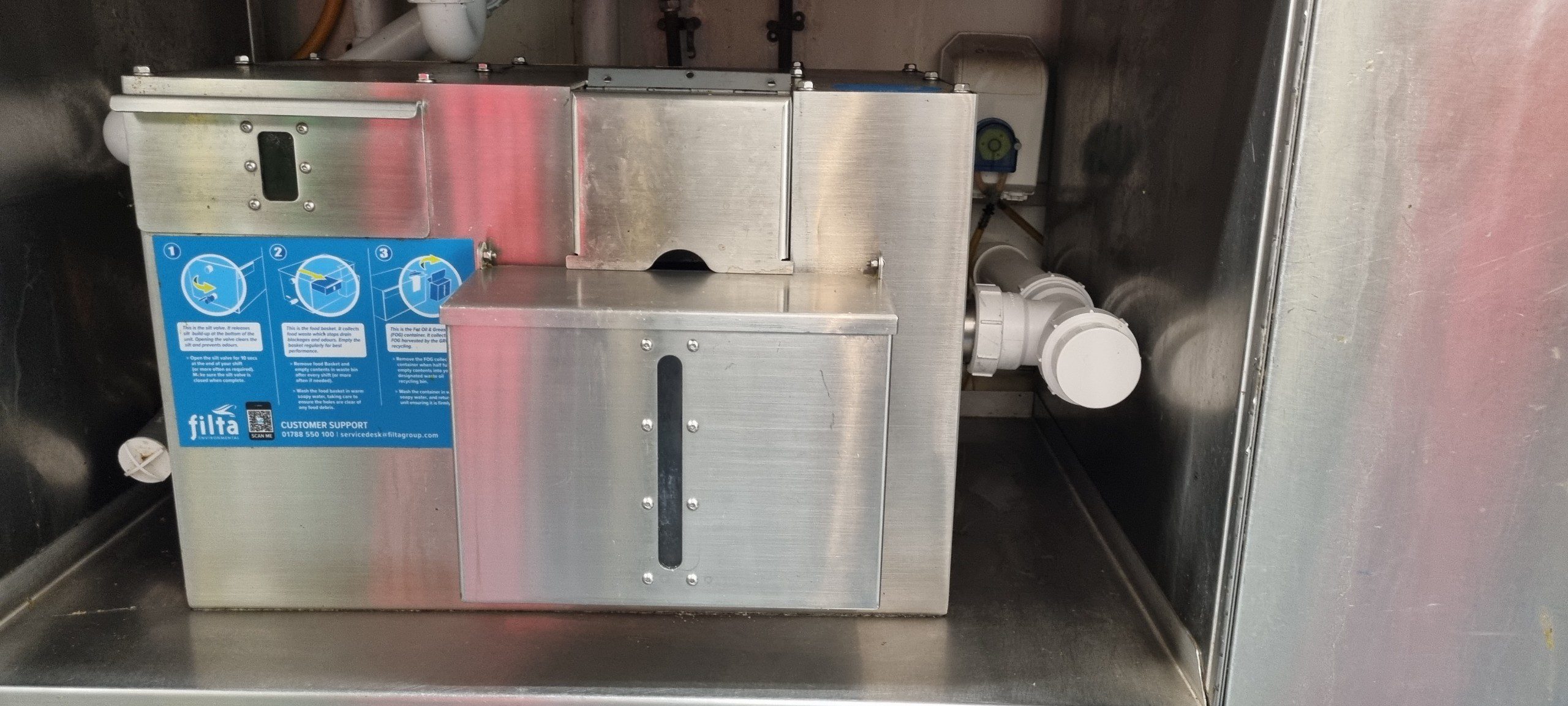Grease traps are essential in maintaining efficient kitchen operations by capturing fats, oils, and grease (FOG) before they enter drainage systems. This helps prevent blockages, environmental damage, and costly repairs. For commercial kitchens, particularly in restaurants or food production facilities, selecting the right grease trap is crucial for both performance and compliance with regulations. There are various types of grease traps designed to suit different environments and needs.
What Are the Different Types of Grease Traps?
Grease traps come in several varieties, each with distinct features and benefits, depending on the kitchen’s requirements. Let’s explore the most common types:
Passive Grease Traps
These are the most traditional types of grease traps, often referred to as under-sink grease traps. Installed beneath sinks or in compact spaces, passive grease traps use gravity to separate grease from water. As wastewater flows through the trap, grease rises to the top, allowing cleaner water to exit through the drainage system. While there are various brands and models available, they all operate on the same principle and provide the same essential function.
Best suited for: Smaller kitchens with moderate grease production, such as cafés or small restaurants.
Grease Recovery Units (GRUs)
GRUs are a more advanced version of grease traps—though not technically grease traps, they offer a superior solution. Rather than merely separating grease, GRUs actively recover it, making them highly efficient for larger commercial kitchens. The collected grease can even be sold for biodiesel, providing an additional revenue stream. Operating automatically, GRUs reduce the need for frequent maintenance compared to passive systems. Several brands and products are available, allowing you to choose the model best suited to your kitchen’s needs.
Best suited for: High-volume kitchens, such as those in hotels or large restaurants, that generate significant amounts of grease.
The performance of grease traps depends on their capacity and flow rate, with efficiency decreasing if not properly maintained.
How Do You Identify a Grease Trap?
Grease traps come in a range of sizes and designs, from compact under-sink grease traps to large external systems. They are typically made from materials such as plastic or steel – and can be installed in various locations, such as inside a kitchen or underground.
Legal Requirements
All commercial kitchens in the UK that prepare hot food are required by law to have a grease management system. This regulation, outlined in the 1991 Water Industry Act, is in place to protect public sewers and the environment by preventing the discharge of harmful substances like FOG into drainage systems.
Failing to comply with these regulations can result in significant fines. Kitchens without proper grease traps or GRUs can face penalties of up to £50 for each day the offence continues after conviction.
Grease Trap Maintenance
Regular maintenance is critical to ensure the continued efficiency of any grease trap. Poorly maintained systems not only reduce performance but also increase the risk of blockages and non-compliance with regulations.
It is recommended that grease traps are cleaned every 90 days to maintain optimal performance. For larger systems or those that handle significant grease volumes, more frequent cleaning may be necessary.
While smaller traps may be maintained by kitchen staff, larger or underground systems should always be cleaned by trained professionals. Regular servicing ensures compliance with hygiene standards and prolongs the lifespan of the grease trap.
At Filta, we offer comprehensive grease management services that include cleaning, maintenance, and grease collection. This service ensures that your grease trap remains fully functional and compliant with regulations.
Cost and Efficiency
While installing a grease trap or GRU can be a significant upfront investment, it is essential for the smooth running of a commercial kitchen. Moreover, GRUs can collect waste oil, which can be sold for biodiesel, providing an additional source of income. Regular maintenance, along with the potential to generate revenue from waste oil, makes these systems cost-effective in the long term.
Filta Commercial Grease Trap Services
Filta offers a full range of grease trap services, from installation to maintenance. Whether you need a passive grease trap for a small kitchen or a GRU for a large commercial operation, Filta can provide tailored solutions that meet your needs.
Our services include:
- Installation of high-quality grease traps and GRUs
- Routine cleaning and maintenance
- Collection of waste grease
- Compliance checks to ensure your kitchen meets all regulatory requirements
- With over 25 years of experience, Filta is the trusted choice for grease trap management in commercial kitchens.
FAQs
How Do I Choose a Grease Trap?
Choosing the right grease trap depends on your kitchen’s size, grease production, and budget. Filta offers expert advice to help you make the best decision, and our services ensure your trap remains compliant and efficient.
What Is the Filta Cyclone?
The Filta Cyclone is an advanced grease recovery unit (GRU) designed for high-efficiency Fats, Oils, and Grease (FOG) retention with lower energy use than traditional models.
What Is the British Standard for Grease Traps?
The most common grease traps in the UK are passive underground systems, which must meet specific standards for grease separation efficiency to ensure compliance with regulations.
For more information on our services or to get a quote, contact us today.

